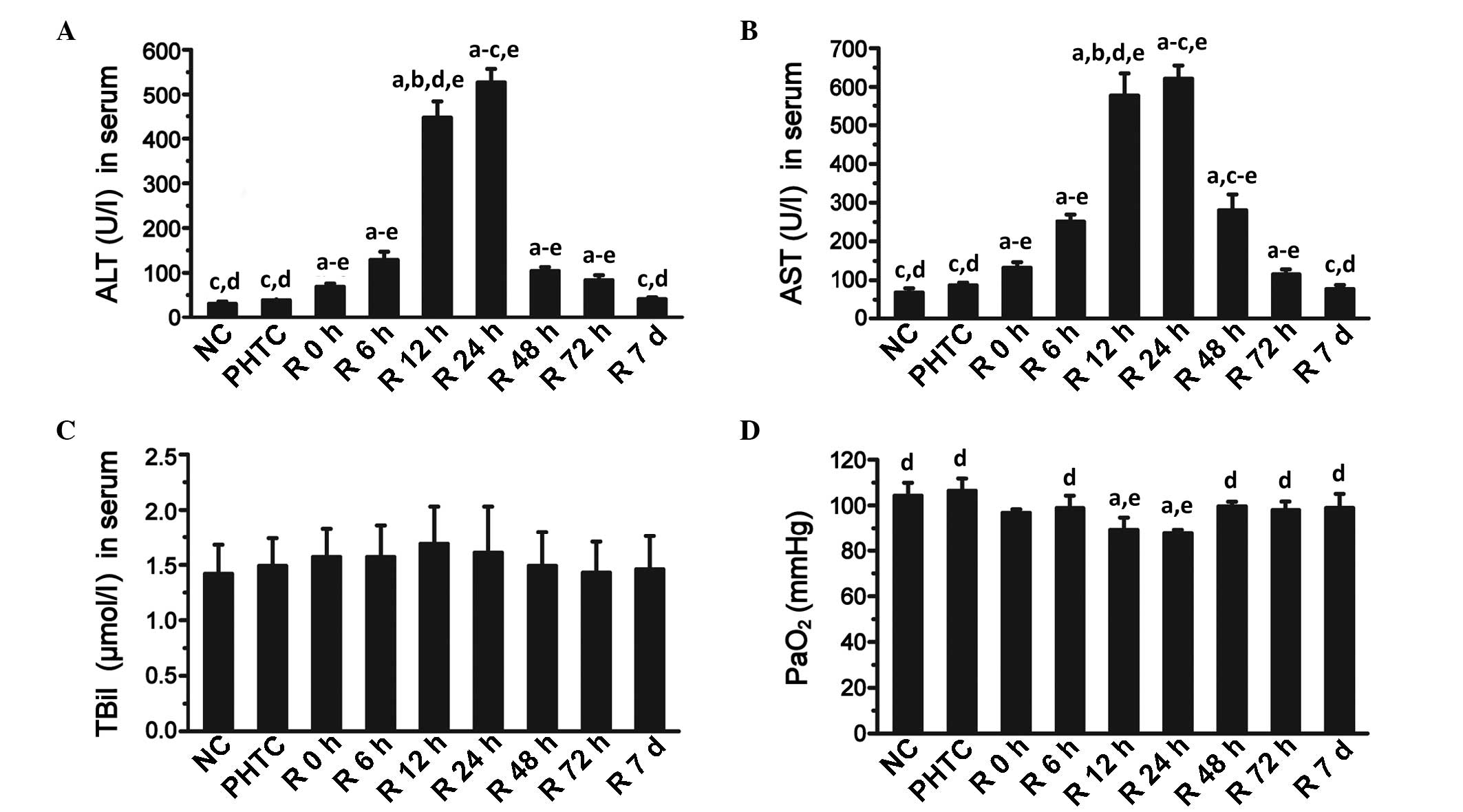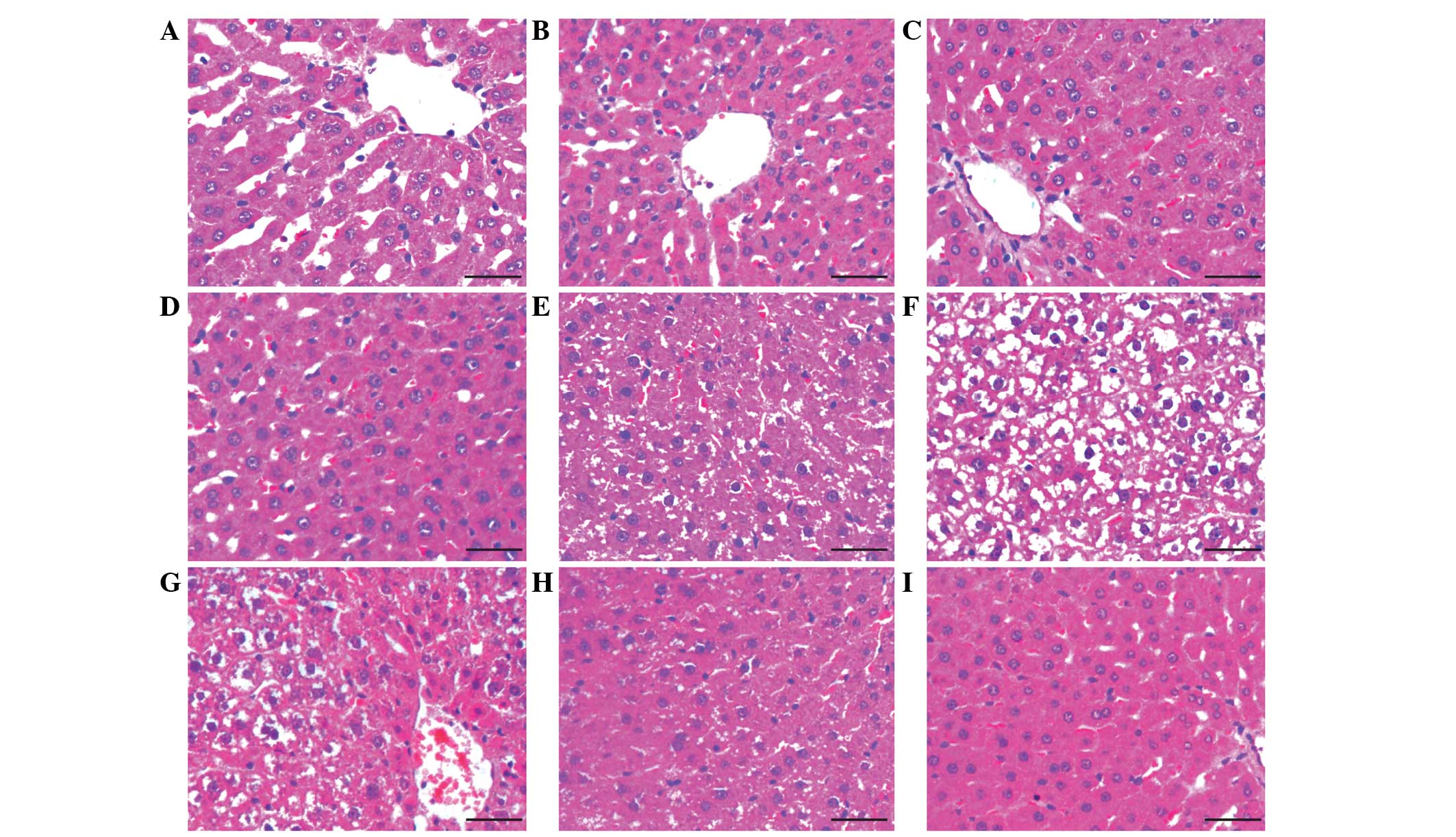Establishment of a reversible model of prehepatic portal hypertension in rats
- Authors:
- Published online on: May 30, 2016 https://doi.org/10.3892/etm.2016.3405
- Pages: 939-944
-
Copyright: © Zhao et al. This is an open access article distributed under the terms of Creative Commons Attribution License.
Metrics:
Total
Views: 0 (Spandidos Publications: | PMC Statistics:
)
Total PDF Downloads: 0 (Spandidos Publications: | PMC Statistics:
)
Abstract
The aim of the present study was to improve upon the traditional model of pre‑hepatic portal hypertension in rats, and simulate the anhepatic phase of orthotopic liver transplantation without veno‑venous bypass. A reversible model of portal hypertension was induced by portal vein ligation, with a label ring ligated along the portal vein. A total of 135 male Wistar rats were divided into three groups: i) Normal control (NC) group; ii) portal hypertensive control (PHTC) group; and iii) reperfusion (R) group. In the R group, rats with portal hypertension underwent simultaneous clamping of the portal triad and retrohepatic vena cava for 1 h, followed by removal of the clamps to enable blood reperfusion. Portal venography and portal vein pressure were recorded during the surgery. Arterial oxygen pressure (PaO2), and alanine aminotransferase (ALT), aspartate aminotransferase (AST) and total bilirubin (TBil) levels were determined, and pathological changes of the liver were investigated by immunohistochemical staining. The results demonstrated that, 3 weeks after portal vein ligation, the vein area and the free portal pressures in the PHTC group were significantly increased compared with those in the NC group. The serum ALT and AST levels in the R group at different time points were significantly elevated compared with those in the PHTC group, and reached their maximal levels at 24 h after reperfusion. Furthermore, the PaO2 at 24 h after reperfusion was significantly decreased. In conclusion, the reversible model of pre‑hepatic portal hypertension in rats was successfully established using the introduction of a label ring. This model may be useful for basic research focusing on the anhepatic phase of orthotopic liver transplantation without veno‑venous bypass.















